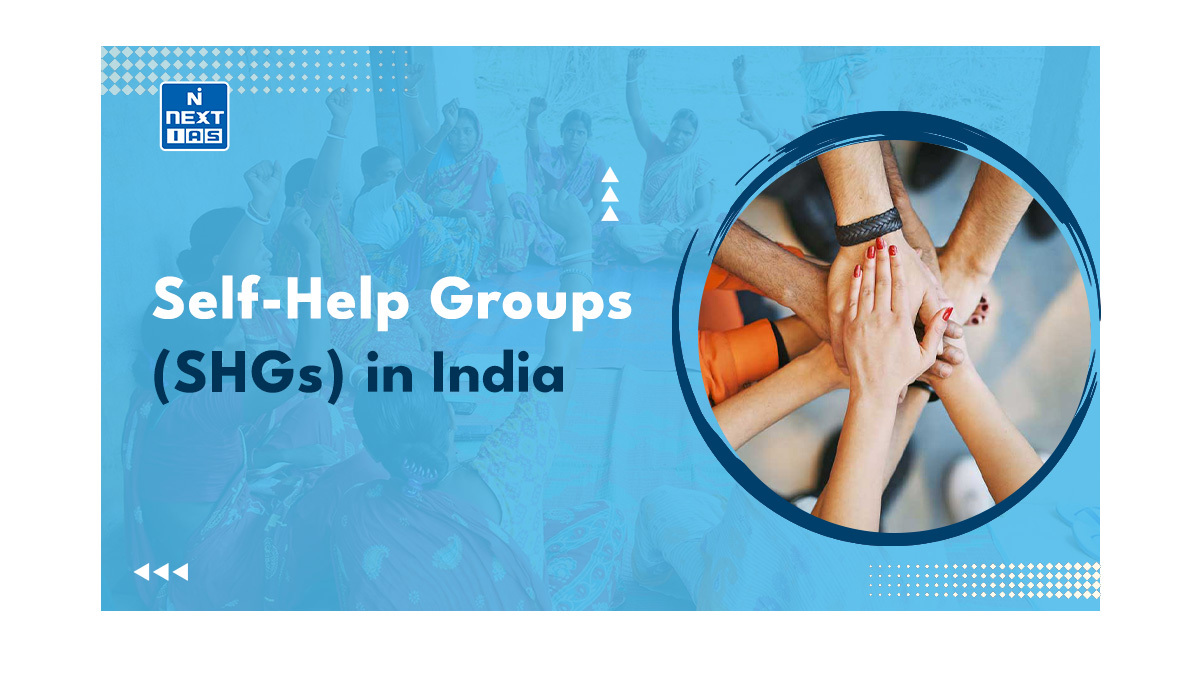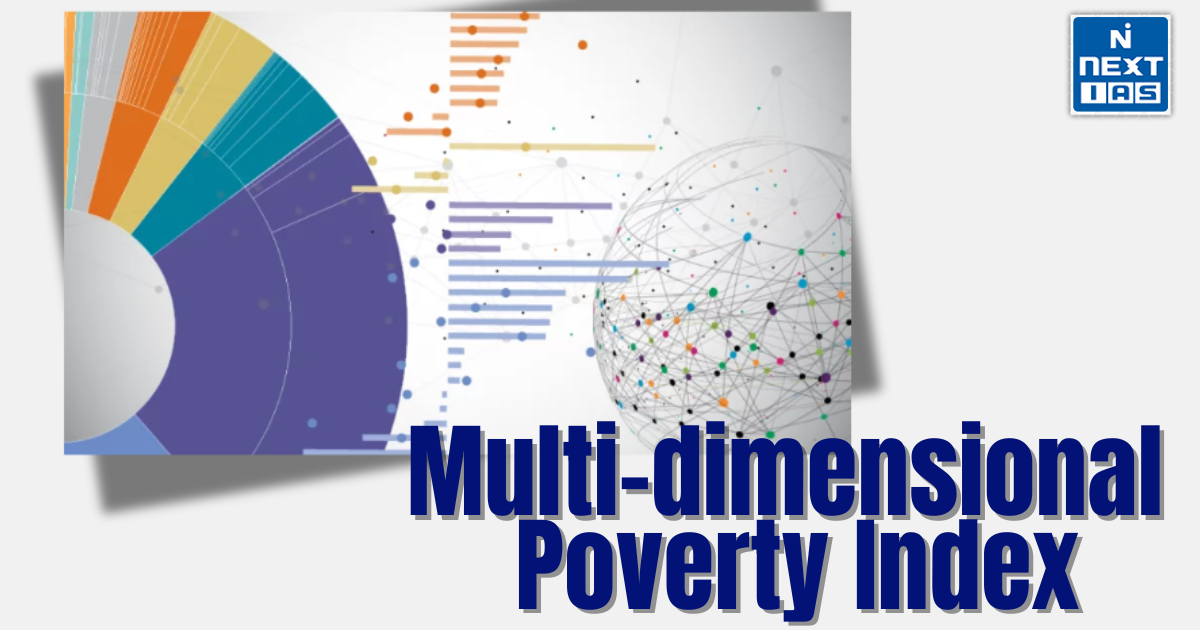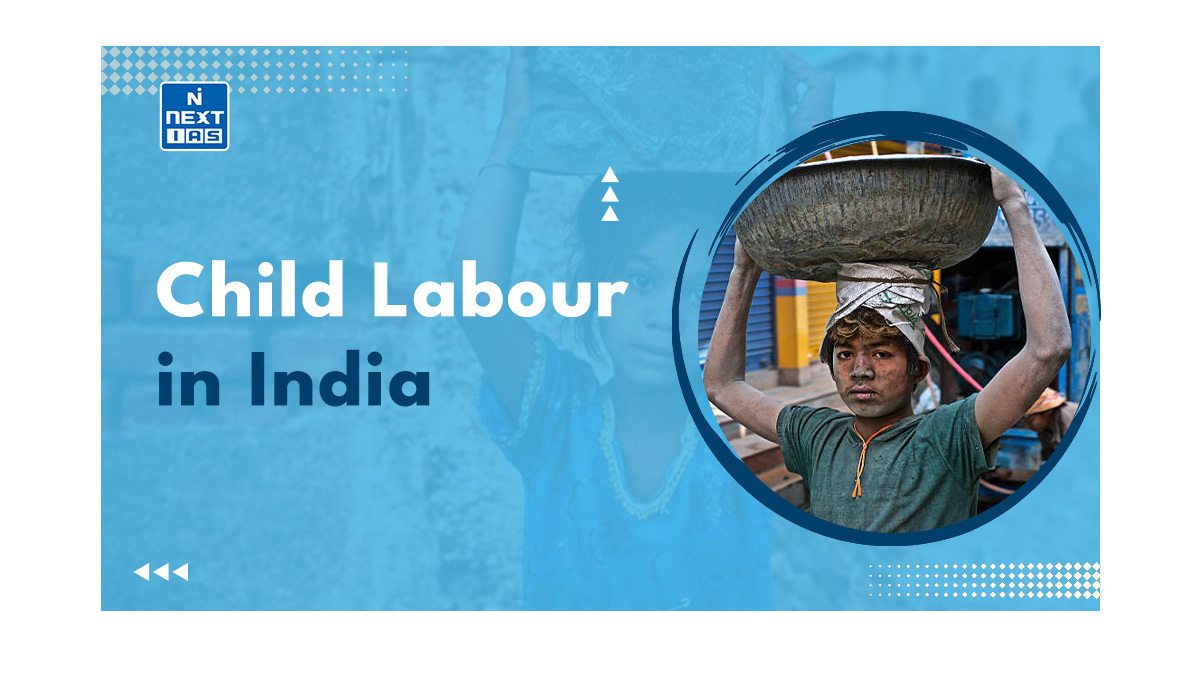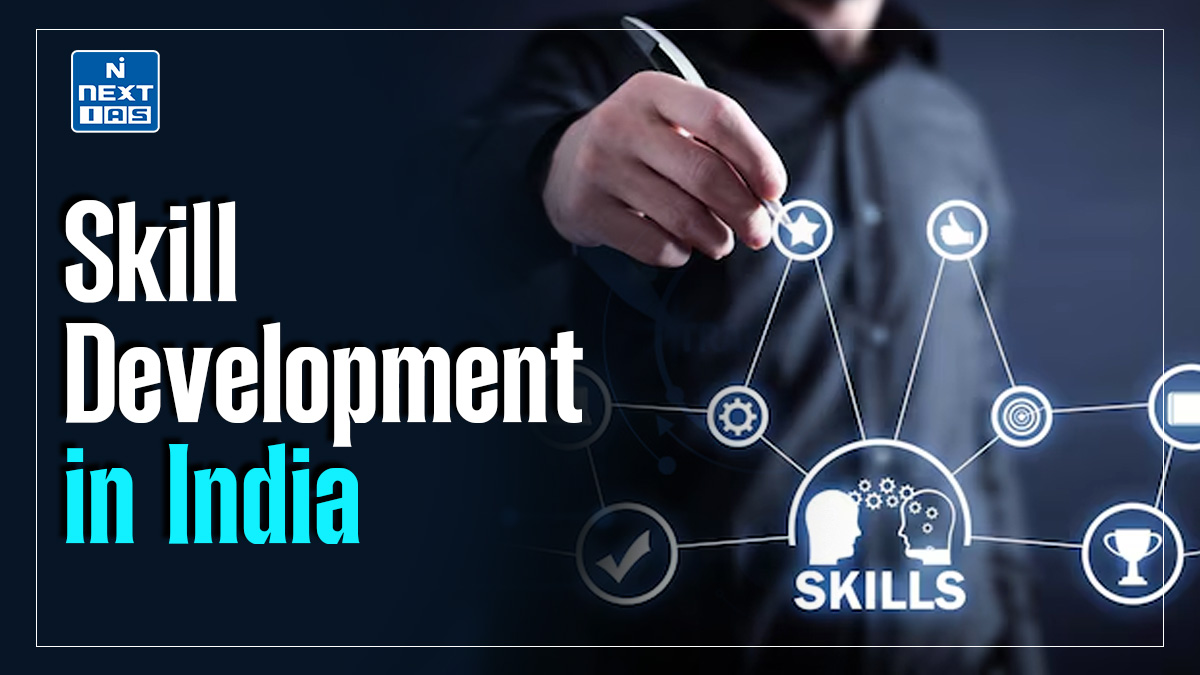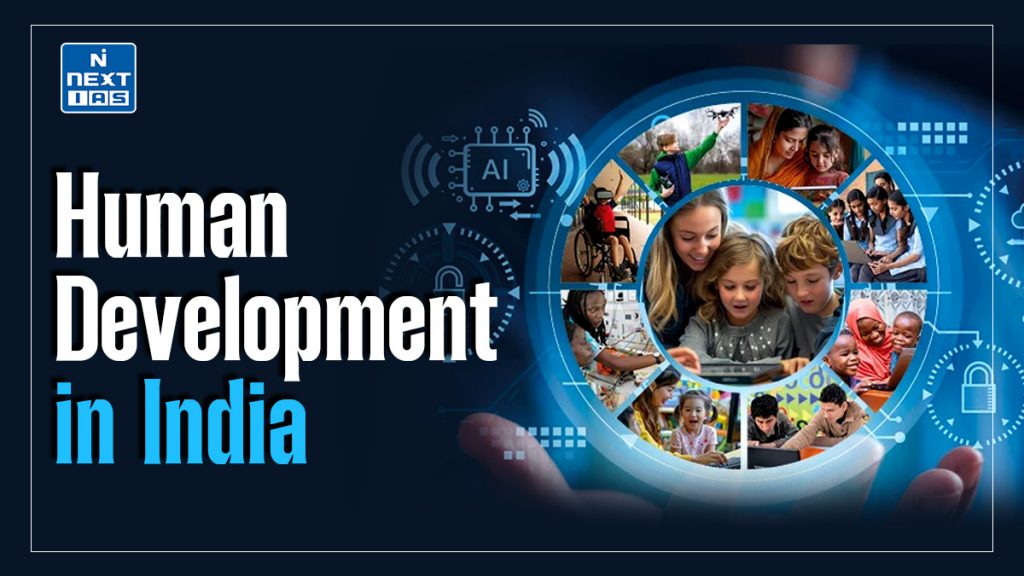
Human development in India focuses on improving health, education, and living standards to enhance the overall well-being and capabilities of its citizens. It plays a crucial role in driving socio-economic growth, reducing inequality, and empowering individuals to lead productive lives. This article aims to study in detail the evolution, achievements, and challenges of human development in India, along with actionable strategies for sustainable growth.
About Human Development in India
- Human development is a multifaceted concept that encompasses health, education, and living standards to enhance individual capabilities and ensure well-being.
- In India, human development serves as a cornerstone for socio-economic progress, shaping the nation’s future.
What is Human Development?
- The concept of human development was introduced by the United Nations Development Programme (UNDP) in 1990, emphasizing the expansion of people’s freedoms and capabilities.
- The Human Development Index (HDI) measures human development based on three dimensions:
- Health: Life expectancy at birth.
- Education: Mean years of schooling and expected years of schooling.
- Standard of Living: Gross National Income (GNI) per capita.
Challenges in Human Development
Health
- Unequal Access to Healthcare: Disparities in healthcare availability between urban and rural areas.
- Malnutrition: Persistent malnutrition among children and women, despite government schemes.
- Non-Communicable Diseases (NCDs): Rising prevalence of diabetes, hypertension, and other lifestyle diseases.
- Public Health Infrastructure: Shortages of hospitals, medical staff, and equipment.
Education
- Quality of Education: Learning outcomes remain suboptimal despite high enrollment rates.
- Gender Disparity: Girls face barriers to education, particularly in rural areas.
- Dropout Rates: Economic pressures lead to high dropout rates among marginalized groups.
- Digital Divide: Limited access to digital infrastructure in remote regions hampers online learning.
Income and Living Standards
- Income Inequality: Economic growth has not translated into equitable income distribution.
- Unemployment: High youth unemployment despite increased educational attainment.
- Housing and Sanitation: Inadequate access to safe housing and sanitation facilities for millions.
- Social Exclusion: Marginalized communities, such as Scheduled Castes and Tribes, face systemic barriers.
Government Initiatives for Human Development
Health
- Ayushman Bharat: Provides free healthcare coverage to economically vulnerable families.
- National Health Mission (NHM): Focuses on strengthening rural healthcare systems.
- Mission Indradhanush: Aims for universal immunization coverage.
- POSHAN Abhiyaan: Targets malnutrition through integrated nutrition programs.
Education
- Right to Education Act (RTE), 2009: It guarantees free and compulsory education for children aged 6-14.
- Mid-Day Meal Scheme: It improves nutrition and attendance among schoolchildren.
- Skill India Mission: It enhances employability through vocational training.
- Digital India: It promotes e-learning and digital literacy.
Living Standards
- Pradhan Mantri Awas Yojana (PMAY): It ensures affordable housing for all.
- Swachh Bharat Abhiyan: It focuses on sanitation and eliminating open defecation.
- Mahatma Gandhi National Rural Employment Guarantee Act (MGNREGA): It provides employment and income security in rural areas.
- Deen Dayal Upadhyaya Gram Jyoti Yojana (DDUGJY): It enhances rural electrification.
Role of Technology and Innovation
- Digital Health: Telemedicine platforms like eSanjeevani improve healthcare access.
- EdTech Platforms: Companies like BYJU’S and government initiatives like DIKSHA bridge educational gaps.
- Smart Cities: Enhance urban living through sustainable infrastructure.
- AI and Big Data: Facilitate targeted policymaking and monitoring.
Way Forward
- Investing in Health: Increasing public health expenditure to ensure universal healthcare.
- Education Reforms: Focusing on quality education, teacher training, and inclusive digital learning.
- Reducing Inequality: Implementing progressive taxation and welfare schemes to narrow income disparities.
- Empowering Women: Enhancing gender parity in education, employment, and leadership.
- Environmental Sustainability: Balancing development with ecological conservation to ensure long-term well-being.
Conclusion
India has made commendable progress in human development, but significant challenges remain. By adopting a holistic and inclusive approach, prioritizing health, education, and equitable living standards, India can achieve sustainable human development. Empowering its people is not just a moral imperative but also a strategic necessity for the nation’s growth and global stature.
FAQs
Where does India rank in the world human development index ?
As of the 2023/24 Human Development Report, India ranks 134th out of 193 countries on the Human Development Index (HDI), with a score of 0.644. This reflects improvements in life expectancy, education, and per capita income.
What is human development in India?
Human development in India refers to improving people’s quality of life through better education, healthcare, income, and living standards. While progress has been made in areas like literacy, life expectancy, and economic growth, challenges like poverty, inequality, malnutrition, and unemployment remain. Policies aim to achieve equitable and sustainable development for all.
Why is India ranked 134 in HDI?
India ranks 134 in the Human Development Index (HDI) due to challenges like poverty, income inequality, low healthcare access, and education quality disparities. Despite progress in literacy, life expectancy, and economic growth, regional and social inequalities hinder overall improvement. Enhanced focus on equity and sustainable policies is needed for better rankings.
What is the meaning of human development ?
Human development is the process of improving people’s well-being by enhancing their capabilities and opportunities. It focuses on expanding access to education, healthcare, income, and a decent standard of living. Human development emphasizes freedom, equity, and empowerment, enabling individuals to lead fulfilling lives and contribute meaningfully to society.
Who published human development India?
The Human Development Index (HDI) for India is published by the United Nations Development Programme (UNDP) as part of its annual Human Development Report. This global report evaluates countries on education, health, and income indicators. Additionally, India occasionally releases national and state-level Human Development Reports through government collaborations.
What is the human development index ?
The Human Development Index (HDI) is a composite measure used to assess a country’s overall development. It evaluates three key dimensions: health (life expectancy), education (average and expected years of schooling), and standard of living (gross national income per capita). HDI highlights quality-of-life disparities across nations and guides policy priorities.
